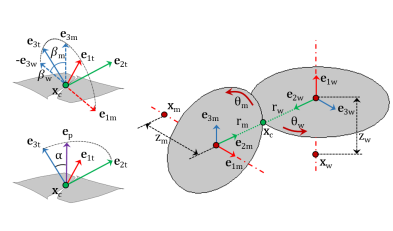When friction is included on a worm and wheel node, frictional forces in the plane perpendicular to the line of action are added on both the gears.
The degrees of freedom at the worm and wheel are θwm and
θwh. They are defined as the rotation of the worm and wheel about the first axis of their respective local coordinate system.


